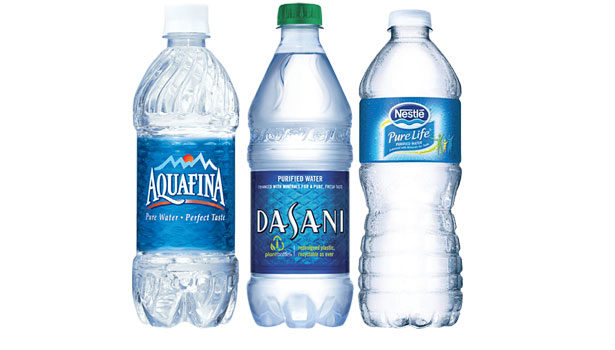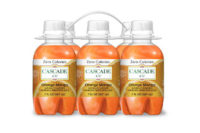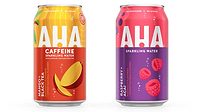Marilyn Monroe might have sung about how diamonds are a girl’s best friend, but this mineral isn’t the only thing that’s been sparkling lately. According to data from Chicago-based Information Resources Inc. (IRI), sparkling/mineral water sales increased 32.5 percent, reaching $1 billion in U.S. supermarkets, drug stores, gas and convenience stores, mass market retailers, military commissaries, and select club and dollar retailers for the 52-week period ending Aug. 11 compared with the prior-year period. This increase outpaced the overall bottled water category, which grew 2.2 percent during that same time period.
| Jump to: |
These strong sales for the segment are in contrast to the contraction it exhibited during the recession, experts note.
“For the sparkling segment, we have it accounting for 11.8 percent of revenue, and during the past five years as a whole, we’ve seen that increasing even though it decreased during the recession,” says Jeffrey Cohen, industry analyst for IBISWorld, Santa Monica, Calif. “During the years following the recession, as unemployment decreased and as per capita disposable income increased, more people were buying these luxury water bottles.”
In its March 2013 “Bottled Water – US” report, Mintel notes that the segment grew 16.3 percent in 2011, 34 percent in 2012, and will continue its growth through 2017.
“The segment offers a closer parity for consumers looking to trade away from carbonated soft drinks [CSDs] or other high-sugar drinks due to the carbonation and frequently low calorie count,” the Chicago-based market research firm reported.
“The segment offers a closer parity for consumers looking to trade away from carbonated soft drinks [CSDs] or other high-sugar drinks due to the carbonation and frequently low calorie count." |
Jonas Feliciano, beverage industry analyst for Euromonitor International, Chicago, echoes a similar analysis about sparkling waters’ health and wellness appeal for consumers.
“Sparkling came out real strong last year … but sparkling came out from a small base [and] still is very niche in the U.S.,” he explains. “[The segment showed a] really strong performance in 2012 mainly because of the position as a premium, healthy alternative to carbonates where people can still get their carbonated beverage but without the calories or maybe with natural flavors and that sort.”
Although private label remains the leader of the segment, individual brands also have showcased strong performance, including Preston, Wash.-based TalkingRain’s Sparkling Ice, which increased sales approximately 134 percent for the 52 weeks ending Aug. 11, according to IRI data. The sparkling water brand continues to roll out new flavors, such as its Peach Nectarine and Crisp Apple that launched in early 2013, followed by its Strawberry Lemonade, Raspberry Lemonade, and Lemonade and Tea releases this summer.
Also adding more variety to the segment, Atlanta-based The Coca-Cola Co. announced in May that its Glacéau brand released Fruitwater, a naturally fruit-flavored, zero-calorie sparkling water.
“Fruitwater offers the convenience of a zero-calorie sparkling water beverage that delivers on the great taste, the fun, and the sense of style that consumers have come to expect from Glacéau,” said Evan Holod, senior brand manager, in a statement.
Packaged in a 16.9-ounce bottle, Fruitwater is available in five varieties — Black Raspberry, Orange Mango, Watermelon Punch, Strawberry Kiwi and Lemon-Lime — and is sweetened with sucralose.
But industry veterans aren’t the only ones contributing to the segment. Los Angeles-based Atom Factory released Pop Water, which was designed to offer a compromise between CSDs and water, it says. Available in Apple, Orange, Pineapple and Grape flavors, Pop Water is sweetened with sugar, erythritol and stevia rebaudiana leaf extract.
‘Still’ encouraging
Although sparkling water is the fastest-growing segment, the overall bottled water segment has maintained stable sales, experts note. With approximately $11.4 billion in sales, the category increased 2.2 percent for the 52 weeks ending Aug. 11 in IRI-measured channels. Convenience still bottled water was relatively flat with $9.2 billion, and jug/bulk still saw modest increases of 2.2 percent for just shy of $1.2 billion.
Accounting for approximately 53 percent during the last five years, convenience still bottled water saw its revenue share decrease during the recession as more consumers switched to jug/bulk, which accounted for 18.5 percent in the last five years, IBISWorld’s Cohen says.
“For still and jug in particular, because they’re tied closely together, basically tough economic times and lower levels of per capita disposable income are the trends that hurt the still water segment during the past five years, and for the jug segment, basically the same conditions that hurt the still water segment actually helped the jug segment,” he explains.
Cohen notes that the market research firm has identified four factors contributing to the category's overall stability. “Some of the driving forces that we identified were demand from supermarkets and grocery stores; per capita disposable income; the price of the input into bottled water production, which is plastic materials and resin; and the healthy eating index,” he says.
Mintel's report also identified a correlation between economic stability and the categories’ performance.
“Economic indicators that show consumers facing additional pressure from rising food, gas, rent and payroll taxes could limit the growth in a category that many consider a non-essential purchase,” Mintel reported.
The market research firm noted that the market increase of disposable income in late 2012 could have a positive effect on the category and forecasts that bottled water will continue its modest increases through 2017 and will attain sales of $15.5 billion.
Although private label brands fared better during the recession, the bottled water category continues to see dominance from three major players — Nestlé Waters North America, Stamford, Conn.; The Coca-Cola Co.; and Purchase, N.Y.-based PepsiCo, IBISWorld’s Cohen says. Accounting for 75 percent of the market, the companies’ brands have outperformed private label and are expected to continue this trend, he adds.
“With purchasing bottled water, people just like going with what’s familiar, and there’s a lot of recognized brands out there,” Cohen explains.
In conflict, however, Mintel notes in its report that the three top-selling manufacturers lost market share in the 52 weeks ending Dec. 30, 2012, while private label experienced market share gains during that same time period.
Euromonitor’s Feliciano adds that the “premium” association with bottled water is a way for brand managers to compete against the value offering that private label can present.
“I think for brands, they need to differentiate themselves because they can’t compete with the low price points of private label bottled water,” he says.
Brands, however, can develop a premium product through improved quality, which could include distillation processes, packaging, and a clean taste, Feliciano notes.
Enhancing hydration
Premiumization is not the only way brand owners are bringing new life into the bottled water category. Functionality and flavor also have found their niches within the market.
“It’s definitely a much smaller category as a whole than still, sparkling and jug, but we’ve actually seen more of a shift toward enhanced and flavored water over the last five years,” IBISWorld’s Cohen says.
For example, The Coca-Cola Co.’s Smartwater, which goes through a vapor distilling process and features added electrolytes, saw sales increase approximately 16 percent for the 52-week period ending Aug. 11. And Bothell, Wash.-based Essentia’s same-named brand has seen its sales increase
50 percent each year for the last three years, President and Chief Executive Officer Ken Uptain told Beverage Industry in its September issue. The brand removes acidic ions to reach a pH of 9.5, he added.
Brands also are finding new ways to deliver nutritional benefits, such as through dispensing caps. Pittsford, N.Y.-based Karma Culture LLC’s Karma Wellness Water; Pompton Lakes, N.J.-based H2M Beverages LLC’s 989 On Demand; New York-based New York Spring Water Inc.’s VBlast; and Los Angeles-based The Rising Beverage Co. LLC's Activate brands all feature vitamins and minerals within the cap that are added to the water at the time of consumption.
Utilizing its patented twist cap, VBlast launched three new functional waters: Refresh, Antioxidant and Immunity. VBlast Refresh contains choline, vitamin E and zinc to help cells in the body regenerate and recover; VBlast Antioxidant features grape seed extract, vitamin C, vitamin E and tea polyphenols to help the body neutralize and fight the effects of free-radical damage; and VBlast Immunity contains echinacea, vitamin C, elderberry extract and zinc gluconate to boost immunity, the company says.
Beyond new product releases, brands also are launching marketing campaigns touting the benefits of the delayed vitamin and mineral addition. Los Angeles-based Activate Drinks’ summer advertising campaign, “Stop Vitamin Cruelty,” highlighted the company’s vitamin efficacy message. The campaign, which is designed like a public service announcement, featured a 30-second digital spot exposing vitamin characters slowly deteriorating in water, adding a humorous element to Activate’s primary benefit of preserving nutrients in the cap, the company says.
“The goal of ‘Stop Vitamin Cruelty’ is to create an engaging campaign that will educate consumers on our fresh vitamins proposition while forming a strong emotional connection with our brand,” said Jesse Merrill, vice president of marketing at Activate Drinks, in a statement. “We want the world to know that some vitamins deteriorate in water, and that Activate is the solution.”
Euromonitor’s Feliciano explains that enhanced waters benefit from offering a closer drinking experience to that of CSDs with their functionality and taste components.
“That really speaks to a lot of consumer trends right now, one being health and wellness,” he says. “With these flavored waters and these functional waters, those types of things are speaking toward consumers that are more conscious of health. The other side of that is flavor variety.”
Recently adding flavor to its enhanced beverage brand was blk. Beverages LLC, Hoboken, N.J. The fulvic-acid-enhanced mineral water released blk.+ in four varieties: Black Lemonade, Mango Splash, Tropical Punch and Blueberry Acai.
Like its flagship blk. brand, blk.+ contains fulvic trace minerals that are extracted from nature and added to the alkaline water, which results in a naturally darker color, the company says. “We set out to launch blk. water as a new alternative beverage for consumers looking to hydrate themselves,” said Chris Laurita, president and chief executive officer of blk. Beverages, in a statement. “Adding blk.+ to the product portfolio is a natural brand extension and one in which we are excited to debut and share with our customers.”
Think of the children
As brand owners look to have universal appeal, companies also are putting an emphasis on children in their product development and marketing initiatives.
“I think it’s a way to introduce and to vie parents an alternative to the soft drinks that they’re packing in their students’ lunch pails and lunch bags,” Euromonitor’s Feliciano says.
Earlier this year, New York Spring Water launched a line of zero-calorie, functional waters called Vbee!. Also using the company’s patented twist-cap technology, VBee! beverages blend spring water with vitamins and calcium to create a healthy, fun hydration experience for children, it says. The brand is available in Blue Raspberry, Watermelon and Green Apple flavors and features a cartoon bee on the label.
Also utilizing kid-friendly characters, Irvine, Calif.-based True Drinks Inc.’s AquaBall features recognizable characters on its naturally flavored enhanced waters that contain vitamins B3, B5, B6, B12 and C. The company also recently announced an extension of its licensing agreement to display certain Marvel characters, such as Avengers Assemble, through the end of 2015. The initial license period was set to expire at the end of 2013. Featured Marvel's Avengers Assemble characters include Iron Man, Hulk, Captain America and Thor.
Water brands such as Wat-aah! also are finding creative ways to resonate with kids, Feliciano notes.
Earlier this year, New York-based Wat-aah! partnered with teen pop stars the OMG Girlz for a multi-faceted, national TV, retail, print and digital campaign for its line of premium functional water for kids and teens. The OMG Girlz were the first of several teen celebrity brand ambassadors planned by Wat-aah! for campaigns in 2013.
Feliciano explains that having a celebrity association is a type of marketing strategy that could appeal to consumers when in celebrity-centric environments.
Broader messages
According to Mintel’s “Bottled Water – US” report, consumers who report drinking water are more likely to report increasing their consumption of tap and bottled water than increasing consumption of other surveyed non-alcohol beverage categories.
This mindset could bode well for the Partnership for a Healthier America (PHA) and its honorary chair first lady Michelle Obama. The Washington, D.C.-based nonprofit launched Drink Up, an initiative that encourages everyone to drink more water, in September.
The campaign, through its public- and private-sector partners, will encourage consumers to drink more water by utilizing a number of different platforms. Beverage brands supporting the cause are Aquafina, Beverly Hills 9OH2O, Dasani, Evian Natural Spring Water, Hint, Voss, Wat-aah! and Nestlé Waters North America.
“We at Nestlé Waters North America wholeheartedly embrace the concept that you are what you drink, and when you drink water, you Drink Up,” said Nestlé Waters North America Chairman, President and Chief Executive Officer Tim Brown in a statement. “That’s why we’re joining forces with the Partnership for a Healthier America and those supporting the effort, including first lady Michelle Obama, to help guide everyone to think of water as their first and most frequent beverage choice. Getting into the habit of drinking water is one of the easiest things people of all ages can do on their path to adopt lifelong healthy habits.”
Wat-aah!’s Chief Executive Officer and Founder Rose Cameron added: “Wat-aah!'s support of this effort is part of its ongoing commitment to educate kids and teens about the importance of drinking water in maintaining a healthy lifestyle. We are excited to take an active role and work closely with the Partnership for a Healthier America to develop fun and exciting programs that will resonate with today's kids and get them to drink more water more often.”
Through the partnership, brands will carry the Drink Up logo on nearly 300 million packs of bottled water, more than half a billion bottles of water, 200,000 packages of reusable bottles, and more than 10,000 reusable bottles.
Beyond health and wellness support, brand owners also are utilizing their products to support causes that are important to them. For example, Newport Beach, Calif.-based Cuipo LLC launched Cuipo Purified Water, which is dedicated to saving the rainforest. Every bottle of Cuipo purchased helps preserve rainforests around the world, the company says. As of December 2012, Cuipo had saved approximately 140 million square feet of rainforest, it adds.
Brands also are coupling those causes with celebrity endorsements. Las Vegas-based Real Water, an alkalized and antioxidant bottled water, recently partnered with entertainer Melanie Brown, also known as Mel B, of NBC’s “America’s Got Talent” to benefit Susan G. Komen, a foundation dedicated to the education and research about the causes of, treatment of, and the search for a cure for breast cancer. Through Dec. 31, 2014, Real Water will donate $0.60 to Susan G. Komen from each specially marked case of Real Water sold.












